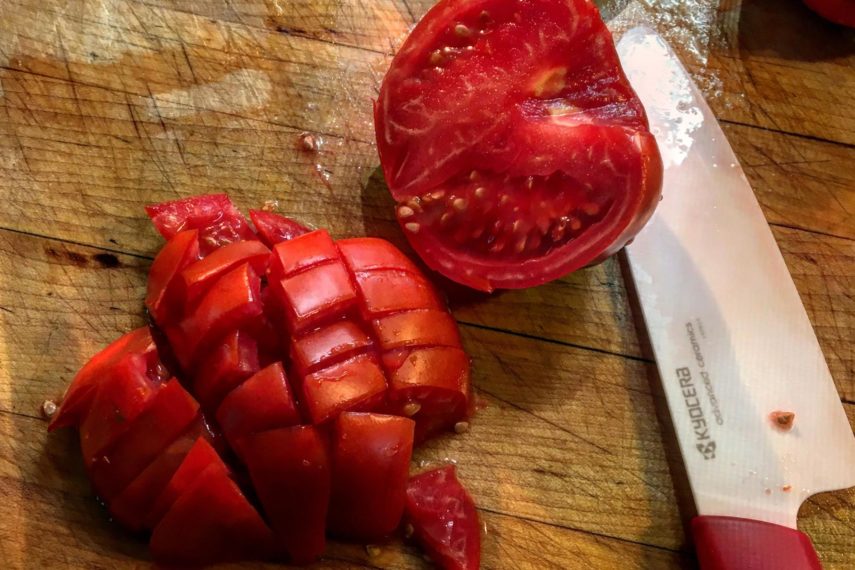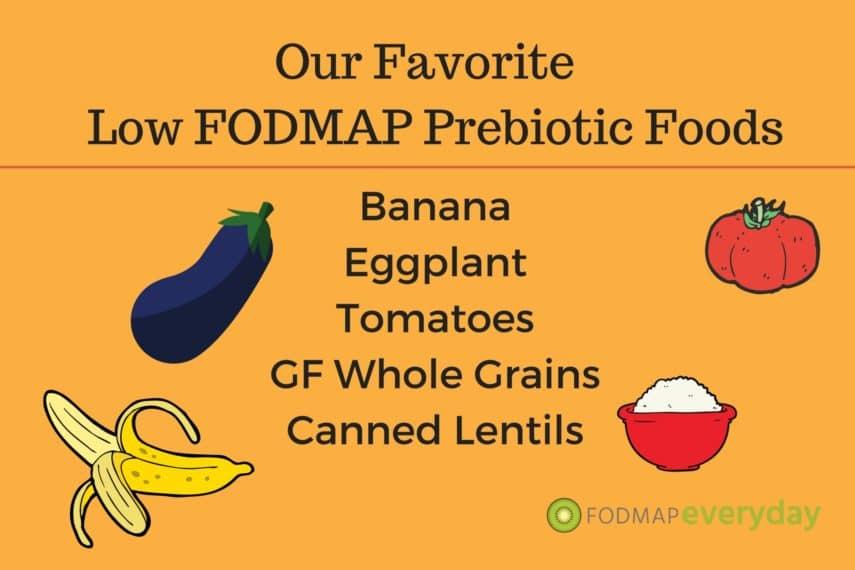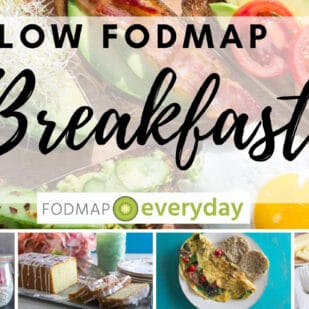Prebiotic vs. Probiotic: What Is The Difference?
I have noticed that information about probiotics is all over the media. But what about prebiotics? It might not be clear what the difference is between probiotics and prebiotics.
To add to the confusion, if you are following a low FODMAP diet, it might be challenging to know which foods naturally contain prebiotics.

We weren’t born this way, though. The first three years of life, we are slowly building a microbiome to help keep us healthy. Ideally, we should have a nice balance and variety of the good type of bacteria in our gut to keep the bad ones from causing problems.
What Are Prebiotics?
Think of probiotics as the “good” bacteria in our intestine.
So, what are prebiotics? Prebiotics are types of fiber that feed the good bacteria in our gut and help to promote the growth of these beneficial bacteria, mostly Lactobacillus and Bifodobacteria. Prebiotics are found naturally in foods that contain fiber. But, it’s important to note, not all foods that contain fiber have prebiotics.
Why Are Prebiotics Important?
Prebiotics are an important part of having a healthy gut for several reasons. It’s common for people to have a hard time digesting foods containing lactose such as milk, cheese, and ice cream.
Increasing your intake of certain prebiotics may actually help to improve this problem. Prebiotics also help to improve your immune function and reduce the chance of getting a bacterial infection.
The risk of chronic problems such as intestinal disease, cardiovascular disease, type 2 diabetes, obesity, and osteoporosis may be decreased by adding more prebiotics into your diet. I think that’s a pretty impressive list of benefits.
Common Types of Prebiotic Fibers
While there are many different types of prebiotic fibers that have been identified, the most common are inulin, fructooligosaccharides (FOS), and galactooligosaccharides (GOS).
Inulin is found in the highest amounts in onions, garlic, and leeks. FOS is found in high amounts in onions and tomatoes. Foods such as lentils, beans, and chickpeas are high in GOS. You might be thinking that many of these foods are restricted on a low FODMAP diet, and you are correct.
It’s important that while you are following a low FODMAP diet, foods that contain prebiotic fiber are not completely eliminated from your diet.
Don’t worry, though, there are many prebiotic foods that are low in FODMAPs and should be tolerated if you eat the correct portion size.
Our Favorite Prebiotic low FODMAP Foods:
- Bananas
Bananas contain a couple types of prebiotic fibers including FOS and inulin. One medium unripe banana is considered a low FODMAP serving. Adding sliced bananas to a Greek or lactose free yogurt is an excellent way to add more prebiotics to your diet. Bananas can also be enjoyed with 1 to 2 tablespoons of peanut butter for a quick, portable snack. Read more in our article, Are Bananas Low FODMAP?
- Canned Lentils
Canned lentils are a great source of GOS prebiotic fiber. This is such a great food that can be easily kept on hand in your pantry. Increase the nutrient density of your salads by adding a ¼ to ½ cup (23 g to 46 g) of canned lentils, eating to your tolerance. Another great way to use canned lentils is to add a serving to chili or soup. Why not make lentil burgers for your next cookout instead of using ground beef or turkey? Please read our Explore An Ingredient: Lentils article for a more in-depth dive into lentils.
- Eggplant
Another great source of prebiotics is eggplant, with a ½ cup (41 g raw) serving considered low FODMAP. My favorite way to enjoy eggplant is to use it as a substitute for the noodles in lasagna. There’s no need to cook them first, just peel and slice before adding your layers. Eggplant also tastes great cooked on the grill with some olive oil and seasonings. It’s also easy to roast eggplant and add it chopped up into pasta sauce.
- Tomatoes
Tomatoes are an excellent source of FOS prebiotic fiber. It’s easy to overdo it with tomatoes, so remember a low FODMAP serving is 1 small tomato (119 g). Add them to sandwiches, salads, or wraps for some extra prebiotic fiber. Fresh tomatoes make a great salsa or tomato sauce, especially if you grow them yourself!
- Whole grains: oats, quinoa, brown rice, buckwheat
Whole grains are an easy way to get more prebiotics in your diet. Oats or quinoa make a great hot breakfast cereal and taste great with some cinnamon sprinkled on top. Buckwheat flour can be used to make some great tasting pancakes and feel free to add blueberries to the mix (keeping serving sizes in check). Brown rice is a quick, easy side dish that pairs well with most types of entrees or vegetables. Use your Monash smartphone app to double check serving sizes as they vary from one grain to the next.
You Can Get Enough Prebiotics on the Low FODMAP Diet!
As you can see, just because onions and garlic are a no-no on the low FODMAP diet, that doesn’t mean you can’t get your prebiotic fiber from foods. The best way to get enough prebiotic fiber in your diet is to include a large variety of low FODMAP fruits and vegetables every day and include some of the ones mentioned here that are especially beneficial.
References
Patel, Seema, and Arun Goyal. “The Current Trends and Future Perspectives of Prebiotics Research: A Review.” 3 Biotech 2.2 (2012): 115–125. PMC. Web. 13 May 2017.
Slavin, Joanne. “Fiber and Prebiotics: Mechanisms and Health Benefits.” Nutrients 5.4 (2013): 1417–1435. PMC. Web. 14 May 2017.
- Sousa, E. Santos and V. Sgarbieri, “The Importance of Prebiotics in Functional Foods and Clinical Practice,” Food and Nutrition Sciences, Vol. 2 No. 2, 2011, pp. 133-144. doi: 10.4236/fns.2011.22019.









Thanks for all you do! Just got your book and have made quite a few recipes- cause I love the ones I’ve found online! Just having a hard time adding things back in…..
Hi Jen, the Challenge Phase can be difficult. We strongly suggest working with a RD. They can make the difference between success and spinning your wheels. We recognize that it is often an out-of-pocket expense but you don’t have to look at this as long term. Even 2 or 3 meetings can make a huge difference. And one of the positive things about this year is that more and more RDs are doing Skype and phone meetings, so you don’t have to think about being limited to your area. Email me at dede@dedewilson.com if you want some specific recommendations for RDs that we know are taking clients.